Health, fitness and foodie enthusiasts, especially those who are committed to eating real, whole foods from organic, local and sustainable sources, have two major complaints I hear often: availability and higher costs (compared to conventional food), and stemming from that, the “why should I eat organic if the other stuff is cheaper?” question.
This post is going be part of a series of posts we’re going to be reviewing over the next few weeks, in which we’ll be answering these questions and concerns above.
Part 1: we’re going to start with how to successfully start a garden at home (and save money). Although I would have normally posted this last, I wanted to get this post up first because Spring is here and Spring gardening can commence! Part 2-4 will then be an “in-order” look from foundation soil (where food comes from) to ultimately the end-game goal: your best health!
Part 2: will be a comprehensive post on organic soil and farming.. what actually happens in soil and why it’s so important for our food (and thus, our health!). We’ll review the studies, literature and soil science behind it. I have looked at hundreds of different studies, books, courses, and sources over the past 15 years on soil science, so we’ll break down all FYI on the soil health —> plant health —> animal health —> human health. It’s all one cyclical wheel of life that we are all a part of.
Part 3: After we have an idea of organic farming, we’ll cover non-organic conventional farming, the chemicals & pesticides used, and what that means for our health.
Part 4: Once you have an understanding of the “why”, we’ll tackle the money saving tips. We’re going to break down organic pricing vs. conventional pricing, misconceptions and hidden costs we don’t think of. This post will include many example foods compare/contrast in pricing, where to find specific deals, how to save money on food in general and more.
Overall, the goal of this series is to help others understand the importance of the soil quality and what that means for your health, your family’s health, and our future generations health.. and then all the tools I can provide from the toolbox for saving money on the highest quality foods.
That said, let’s “dig” in to Part 1..
I understand cost of food can be a concern for anyone trying to stay on a budget, so another great solution for cutting down on your food costs we’re going to cover in this first part of the series is growing your own organic garden at home. The freshest organic food of your choice will then just be right in your backyard, your roof top apartment, your condo patio, your tiny studio, your front porch, or even in your kitchen; you can literally start one anywhere and have the highest quality nutritious “garden to table” foods in your body and life.
For the newbie looking to start their own organic garden, I always recommend implementing my 1-1-1 rule:
One pot, one bag of organic soil & compost, and one packet of organic seeds and/or organic plant(s) you buy at your local nursery.
That’s all I want you to do.. keep it simple. From there, you can “dial in” your garden that much more with these how-to success tips below to help your garden thrive.
First things first...
1. What kind of space do I have?
First off, let’s touch on spacing. Depending on the space you have, you’ll want to use the 1-1-1 example and multiply it by the space you have or can allot to your garden. One pot, two pots, three… if you’ve got the room, a plant bed suited to your needs is great. Another great idea is if you live in a community (for example, a condo complex, duplex, etc.) is discussing with your neighbors or whoever you need to build a community garden.
Update 03/2015: I did this 100+ plants in a 3′ x 2′ space for less than $20 post. Fantastic way to grow a lot of real food if you’re limited on space. Great for balconies, patios, porches, etc.
Below you’ll find some picture examples and dimensions of pots, including plants I put in each one, that you can try in different sized areas of your own home.
The kitchen herb garden – 7″: for any kitchen counter top
If you don’t have access to outdoor space, you can grow an herb garden in the kitchen. Pictured above is a 7″ long ceramic container I keep on the counter top. This one has thyme, rosemary, and mint (but you can put just about any herbs in one of these). I love these because you can grab a few sprigs of mint for example and add to some water, a smoothie, Spring mojito, chop up in a meal.. Rosemary is great to chop up some fresh sprigs for meat dishes (also works great to grab one sprig and rub in your hands). And thyme goes great in almost any meal. All easily picked fresh garden to table in seconds time. That’s fast food!
With water in the bottom, the leaves will grow and overall, you have a beautiful display that adds character to your kitchen, is a great conversation piece and will add some amazing fragrances to your home. Although I will note, they won’t flourish continually… plants do need soil, so you’ll need to put soil in the bottom. I personally use this container pictured to take sprigs from the garden (with some roots on them if I can) and add to the container in water (mine lasts about a week.. so it’s really for picking and using in foods/meals in that amount of time).
If you have the wall space, check out this idea for a great indoor herb garden! <—example of a fun weekend project the whole family can get into.
Here’s a more extensive post for growing herbs indoors from Simple Bites, as well as 30 other ideas for growing an herb garden.
The cinder block garden – 15″: the cheapest start up “pot”
The cinder block is great because they cost about $2 each or less, and 1 bag of soil and compost will go a long way with multiple blocks. These work great for herbs, lettuces.. pictured I’ve got tarragon (so good with eggs!) and cilantro. Both plants cost about $3. A couple hands full of soil and compost. And a $2 pot. For about $10 you’ve got an herb garden (both tarragon and cilantro can grow abundantly). Do a few blocks and you’ve got 6+ different herbs you can grow. I got these cinder blocks at a place like home depot.
The drawback with the cinder block is it’s tough to plant bigger/taller growing foods like a tomato plant for example.
You can even get creative and build a cinder block garden wall or garden bed.
8″ pot garden – recommended: 2-3 of the same herbs
These smaller pots work great because you can fit at least two of the same herb plants in each one, especially ones you use a lot. Pictured above is cilantro which you can add in so many dishes. Then with this pot size, if your gardening space is limited and/or sporadic (areas here, areas there), you can place pots in different locations. For example, let’s say you live in a condo complex and only have a small patio with ledge. You can add a pot on one corner edge of the ledge, another corner edge.. and then two other pots on the ground in each corner. I lived in a condo a few years back and did this and had an awesome garden! You can also do a hanging garden or other type of vertical garden if you’re limited on horizontal space.
13″ pot garden – recommended: 6-7 different lettuces, different herbs, or a mix of each.
This size pot works great if you want to create an herb mixture garden or grow a bunch of lettuces. Pictured above I have 6 different lettuce varieties, including 2 of the green leaf to even it out (I could have actually planted closer together and added more but I wanted you to be able to see the spacing in between). I use lettuce all the time, so I tend to grow more. They work great because if you don’t harvest the plant (pull the whole thing out roots and all), and only pull leaves as you need them for salad as example, they’ll keep growing back. I planted the picture above just last weekend and those leaves will last me all summer, if not longer, as they keep growing back… I’ll end up saving a lot of money on buying lettuce in the long run.
17″ pot garden – recommended: 6-7 different lettuces/herbs + tomato plant in the middle
This particular pot works great because it is deep. You can’t see it with the birds-eye view, but it measures 17″ deep as well… great for a tomato plant centered. Around the tomato plant I have mix of lettuces and herbs (again, stuff I use a lot): red leaf lettuce, cilantro, basil. This particular pot will be a joy in a month or two because i’ll be able to pick my own tomatoes and basil from it and make caprese with a little drizzle of olive oil and balsamic – all from your very own garden pot. All of the particular plants in this pot are abundant and generous with there leaves as well, so they’ll keep growing back.
23″ pot garden – recommended: 10+ different lettuces/herbs + tomato plant in the middle
If you have the room, this size pot is great because you can grow an abundance of food in one pot in less that 2 feet of space (~4 total square feet). Pictured I have my staples.. tomatoes and lettuces, but you can also add a variety of herbs as well, maybe add a kale plant for juicing, or even sprinkle some carrot and beet seeds in the nooks and crannies and watch them emerge down the road (this is actually fun to do and a neat one if you have kids- you almost forget where you planted different seeds and then all of sudden they emerge.. almost like a surprise).
Combo Garden: Multiple pots
If you have the room, you can combo the pots together. Pictured below are three of the pots together with total living space dimensions just over the 3′ foot mark (~6 sq ft), and look what we have: a tomato plant, 15 lettuces, and cilantro. Again, you can mix and match what you use the most, but this arrangement below we could cut the lettuces in half and add different herbs, kale, spinach, chard and so much more.
These pics above are what I personally use, but let’s look at other options you can try.
Below are a few resources I’ve compiled for any living situation in terms of space:
– Garden pots: see above different examples. Mix and match pot sizes, as well as plants, for what suits your needs and living space.
– Garden bed or multiple pots: If you have more room, build a garden bed. My cousin just built a 7′ x 3′ bed a long side his house where a bush was and he’s growing a variety of different vegg – carrots, beets, kale, chard, lettuces, cucumber, squash, herbs and strawberries. You don’t need a lot of space to grow. Here’s another link for how to build a garden bed from Popular Mechanics. Do you have kids? I really liked this idea that Suzie Thomas sent me on Pinterest for a Legos garden!
– Vertical system: If you have minimal horizontal space, but can grow vertically. Here’s an example of an old shoe organizer turned into a vertical garden. Pretty cool. And another idea for how to build a vertical garden using wood pallets.
– Hanging plants: Utilizing “air” space you can do a hanging garden. Here’s an example of a DIY hanging version.
2. What do I grow?
Usually the rule for this is – grow what you’re going to use the most! In Step 1, you notice I have a lot of lettuce, herbs, tomatoes.. I use those almost every day.
So “what to grow” will be different for everyone reading, including different based on location. Depending on where you live in the world, you’ll want to grow to your seasons as well. For example, Spring is coming for where I live, but down under in Australia, Winter is coming. So the best advice I can give is ask your local nursery (google “your town” + “nursery” and see what comes up). You can also use sources like Local Harvest and Farm Plate to locate different farmers and growers in your area and ask them – these people are usually passionate about what they do and are happy to help and give advice not only about plants, but soil, how to grow, etc.
I also wanted to note, I now have organic soil, earthworm castings, paramagnetic rock dust and humate in my nutraceutical line – all amazing nutrition for growing abundantly nutritious plants. I’ll get more into what these things are in Part 2. I’m very excited about this stuff. They’re not available on the actual online site yet to purchase, but if you would like more info regarding them or would like to get pricing and order, contact clinic@nyct.me.
NOTE: You can get the gist of it with Step #1 and Step #2 if you’re just starting. This is your “start guide” in other words.
Once you figure out these two steps in terms of your space and what you should grow, now we can get into tips for starting and maintaining your garden after you’ve got it going.
3. Analyze and Manage Your Soil
An organic garden depends a lot on your growth medium – the quality of the soil. With any kind of gardening or farming, the soil is everything. A 1/2 teaspoon of organic soil contains some 600 million microorganisms from 10’s of thousands of different species, all that work symbiotically with plants to produce nutrition. Yet in conventional soils, chemically and pesticide-laden soils, some 85% of the microorganisms are destroyed.
Unhealthy, poor soil = unhealthy plants. Unhealthy plants = unhealthy animals who eat those plants (and animals eat animals). Unhealthy plants and animals = unhealthy us.
More on this above in Part 2.
Because you won’t be using chemical fertilizers, pesticides, etc found in conventional growing practices (and resulting in toxic residues in your food and body), ideally you want to choose plants that thrive well in your local ecosystem. There are do-it-yourself home testing kits for managing your soil and plants available at local garden centers and online. What these measure are soil pH – the acidity or alkalinity levels of your medium. If you are growing vegetables, you are looking for an ideal number of about 6.5. Lower than that means the soil is too acidic, higher than that means it is too alkaline. Once you know, then you can make decisions on how to improve your soil. Example, adding compost improves your soil structure, texture, and aeration. The organic matter increases the soil’s water holding capacity. It also promotes soil fertility and stimulates healthy root development, and thus, the healthiest organic produce possible. If you’re doing an organic garden in pots, your local garden center will have organic soil and compost you can buy, as well as any equipment you need to manage the soil quality in this regard.
4. Prepare Your Pots or Plant Beds
In real estate as well as organic gardening, location is the primary thing. You need to pay attention to sunlight availability throughout the day, the drainage, the water source, and the availability of natural pest controls such as specific shrubs and trees in your garden. If you have high quality soil, you should maximize it. What if you don’t have the right soil in the right location? Then consider a raised bed. That way, you have full control over the soil quality and sun exposure. You can use untreated wood or stones (even cheap cinder blocks) as a side border. Make sure that it is at least 16 inches high as it is important for the roots to have space. Online stores offer raised beds for organic gardening as well. You can also build them yourself (video), your local garden center being a great place for help with that. If there is no space for a raised bed, then I recommend just doing the pots. Pots should be deep enough for roots to grow and should have drainage holes. Pots also hold moisture very well, and if you’re limited on space, pots are a great way to grow (see above the pictures of the ones I did).
5. Choose Your Planting Materials Well
Once you have decided what to plant, make sure that you get your organic seeds from a trusted source. They can be found at nurseries, online stores and seed catalogs. These are an example of a brand I like to use. Avoid seed companies that use “genetically engineered” or GMO seeds, essentially meaning gene altering (why mess with mother nature? dangerous territory in my opinion). Since you are starting an organic garden, choose plants which are native in the area so that they adapt well to the environment. Needless to say, plant according to season. I’ve mentioned above, but adding herbs in the plan are great as they provide fragrance, resist some pests, have healing properties, and add great flavor to your cooking. Grow your seeds directly in your pots or if you have a plant bed, you can grow in small pots and transplant them to your plant beds. Read instructions carefully as each seed packet usually has recommendations on how to grow them (i.e. start them in smaller pots or not).
6. Start Composting
Compost is your best friend in organic gardening. It is your power source as it provides nitrogen, phosphorous, potassium, and micro/macronutrients essential for plant growth and productivity. Think of it as your soil and plants daily multivitamin. Composts also attract insects and fungi that aid in decomposition, aside from the fact that it is an excellent waste management practice. There are several online resources about composting. I use a lifetime compost tumbler, but you can find many ideas that work great for your living space. Here are a couple great sources on starting to compost:
7. Practice Wise Water Management
Organic gardening includes practices in water conservation and recycling. Rainwater catchments such as buckets and cisterns are great ways to save water. I like urban homesteads website, they get into water conservation methods (as well as organic gardening).
You can invest in a soaker hose as it is the best way to water the roots but keep the leaves dry, thus avoid diseases. Hand watering can be time-consuming but still better than sprinklers and drip irrigation.
Another consideration with water… speaking for the U.S., our tap water is loaded with toxic residues, heavy metals, antibiotic residues, chlorine, flouride and so much more (literally a laundry list of toxins).. so if you can get a filter for your hose, or better yet your entire house for long term investment into your water health, do that.
8. Manage the Pests
The best way to prevent pests is to maintain healthy soil as it develops the plant’s resistance. The microorganisms in the soil help maintain a plants immune system (more on this in Part 2). Practice diversity in a plant bed so that insect or pest population won’t increase as pests are likely to eat specific plants and breeds. These also encourage many different kinds of beneficial insects which will control pests. Make sure that sunlight exposure is appropriate as some pests thrive only in dark and damp places.
9. Mulch
In beauty regimens, we say moisturize. In organic gardening, we say mulch. The use of organic mulches such as hay, straw, glass clippings, and manure in your garden is one of the most effective ways to control weeds, prevent erosion, maintain moisture, and provide organic matter. If you have a compost tumbler, you can add all of this stuff to that. The microorganisms love it!
10. Start a Vermicompost
No organic garden can succeed without your greatest ally: earthworms. They cultivate the soil and vermicompost- they’re like the deep digestion system of the root ecosystem. The combination of organic matter and earthworms’ castings, is a high-octane all-purpose organic fertilizer. They also encourage beneficial soil bacteria while discouraging disease and predators such as crop destroying insects. There are excellent resources for vermicomposting. Or you may consult your local garden centers for specific tips.
Other considerations once your garden is coming a long:
– Keep an organic garden journal. Yes, keep a record of your activities. Organic gardening depends on your attention to details. What practices should be kept and what practices should be eliminated? Write these observations. Return to them regularly. Same way I talk about “dialing in” your body for health.. this is dialing in your garden!
– Work in your garden regularly. It took me a few years to realize it, but you begin to develop a spiritual connection to your plants. You are in fact connecting with nature and absorbing that energy – as you would if you went for a walk on the beach, a hike in the forest, etc. There is an exchange of energy with living beings (that’s quantum physics 101). So overall working in your garden can be very meditative-like. It’s a way to unplug from the micro-second driven to-do list day, where we’re in a high sympathetic nervous system state, to balance out with parasympathetic activity. The body needs balance. It will always strive for equilibrium.
– Blog about it. Why not? Organic gardeners can certainly benefit from each others experiences. The more ideas and stories, the better. Plus if you’re into food, nutrition, health and fitness, adding this aspect to your blog is an amazing way to show others the benefits of having your own garden.
Here are some great organic gardening blogs and resources that I’ve come to like that you can check out yourself:
Organic Gardening – Great website and they also have a magazine subscription that is fantastic (I think broken down only about a buck an issue)
Mother Earth News – another great website you can pull a bunch of ideas from
Growing Your Greens – great YouTube channel full of valuable videos.. here’s a few good ones:
-
What to Grow in your Vegetable Garden if you want to Juice Everyday
-
#1 Way to Save Money by Growing your Own Food at Home
-
Grow 53 Plants in 4 Sq Ft with a Garden Tower Vertical Container Garden
Kitchen Gardeners International
I’ve got many more I have saved.. these are some favorites to get you started for more resources. I keep an Evernote folder with all my organic gardening resources. Evernote is pretty awesome by the way if you don’t use it.. you’re able to “clip” any web page you come across and capture the entire screenshot page and www link, which you can then save and organize into different folders to reference down the road. I’ve been doing this with studies/articles for years. Great tool for productivity and organization.
Looking for some good books you can pick up on starting an organic garden? I have these in my library and recommend each:
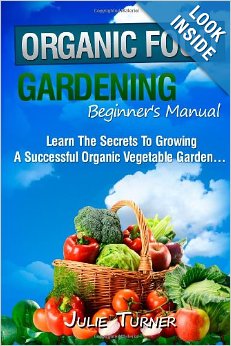


Summary – NYCT Points for Success:
- Figure out your space. If you’re new, start small- One pot, one bag of soil & compost, one plant(s) and/or seeds.
- Grow what you’re going to use the most.
- Soil quality is the most important aspect of plant health (and thus, animal health and human health – we’re all part of Mother Nature’s wheel of life).
- Try it out, you’ll see the fun and pride of ownership of growing your own food. Especially with some of the smaller herb gardens, the investment into your garden and health is about the cost of eating out for lunch. A full 37″ multi-pot setup like the example above, about the cost of going out to a nice dinner. Where as dinner is an expense, a garden is actually an investment that gives you an ROI (return on investment) over the months, years, etc.
- Ask your local gardening nurseries for help, they’re there for it. All the resources in this post are great, but ultimately, the local experts in your geographical area will be the best!
- Making meals with organic produce and ingredients from your own garden not only saves you money, but it’s a real treat as the food is fresh, tastes the best, and loaded with max nutrition being that it’s true “fast food” garden to table.
- Follow me on Pinterest if you have an account.. I’ll usually take some time on the weekend to pin some great organic garden-related finds, so that particular board will usually be updated with new valuable ideas.
I hope you enjoyed Part 1 of the Organics blog series. We’ll dive into Part 2 – soil science, next week and learning why the health of the soil is so critical for the health of the plant.. and ultimately through the closed organic cycle food chain, the most optimal health, vitality and performance for your body.
Have you started an organic garden? What produce and strategies are successful for you? Still unsure or need a little help.. feel free to ask questions below in the comments!

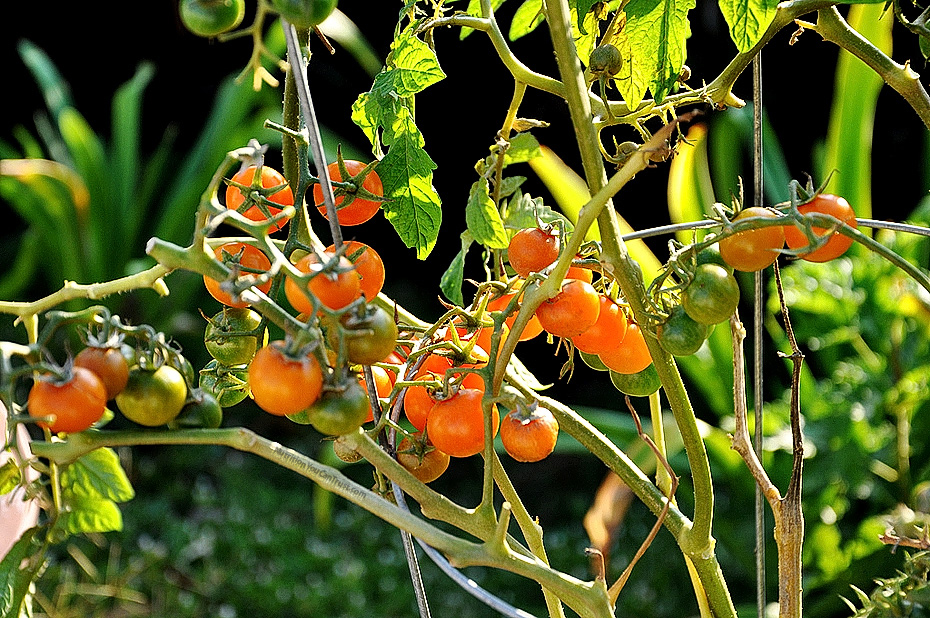
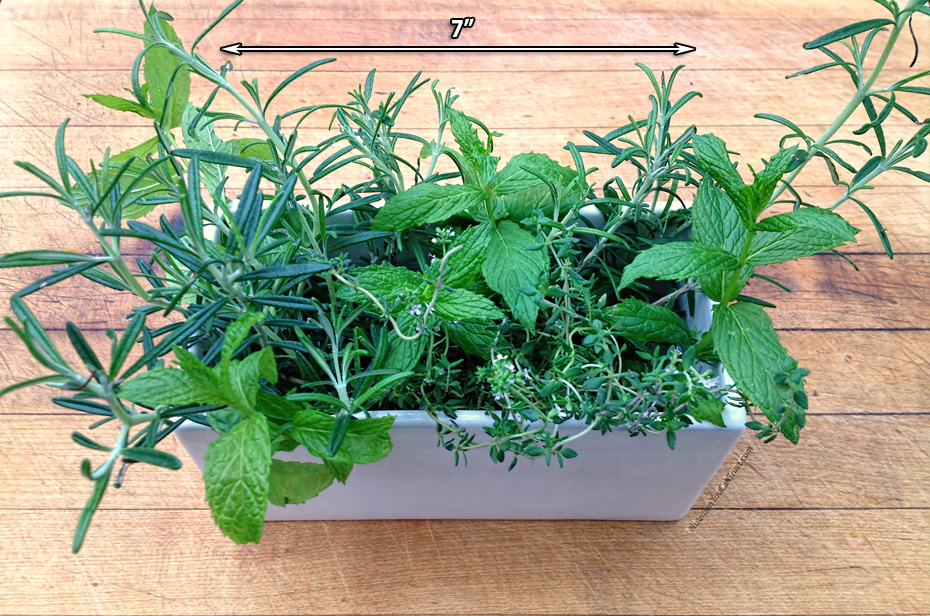

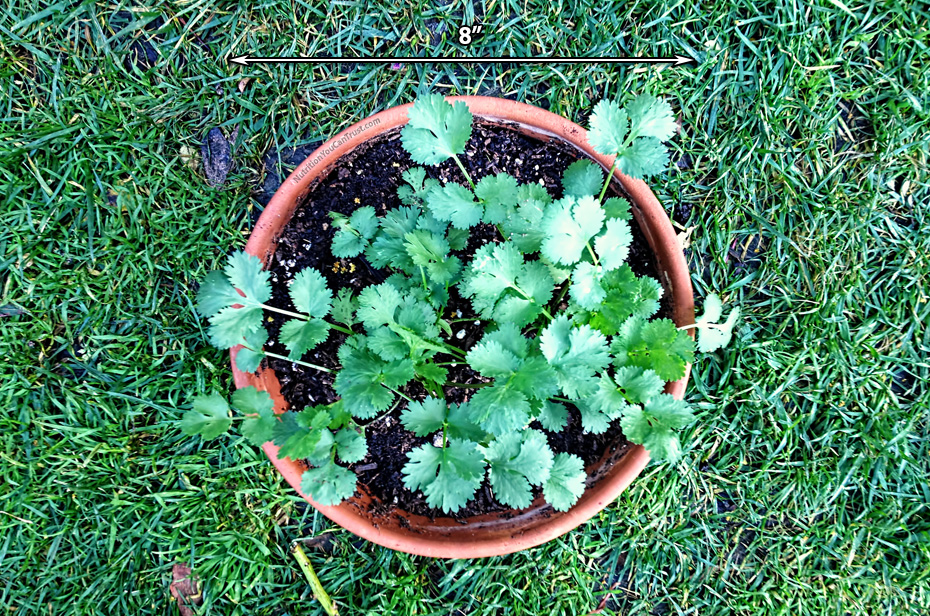


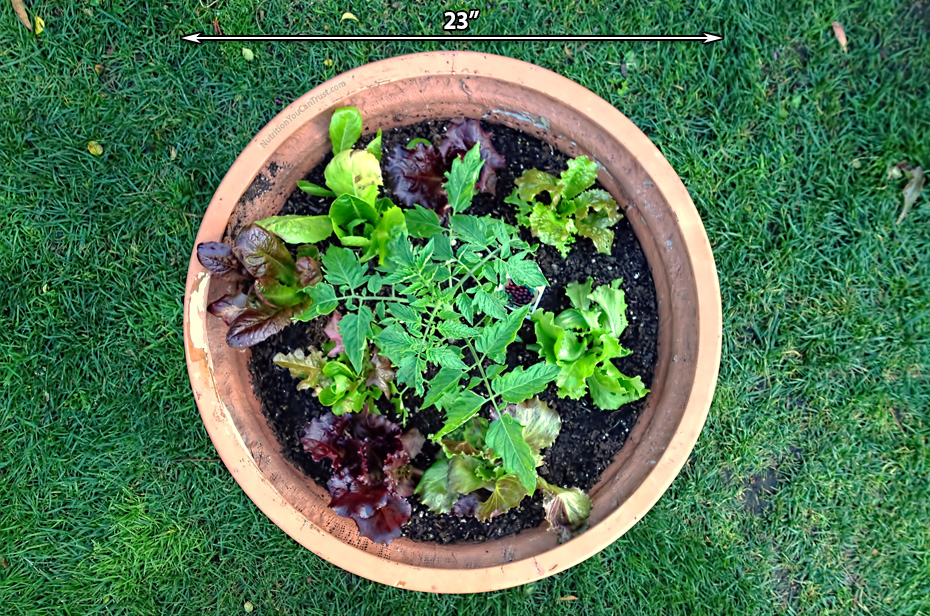
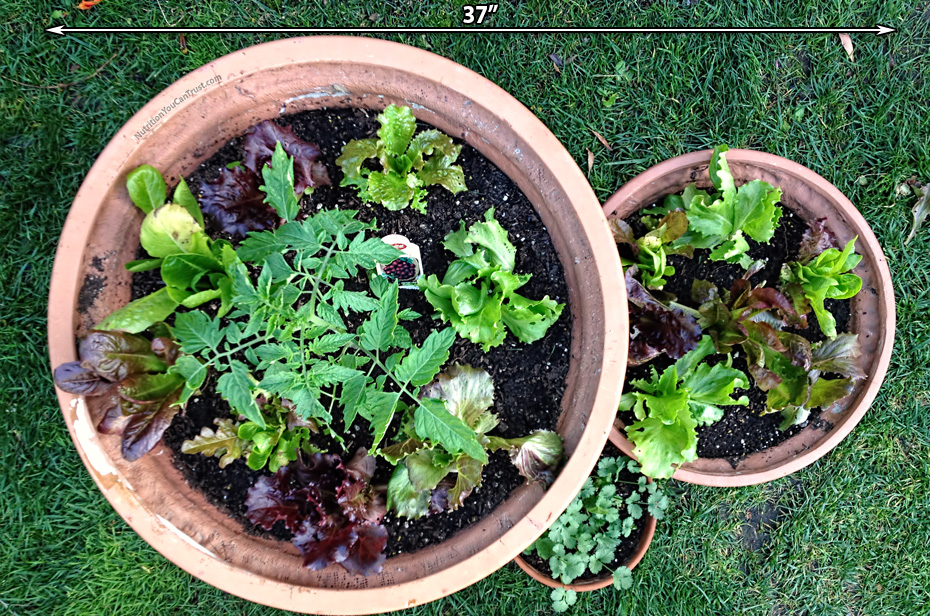
















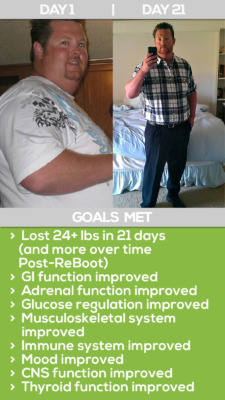








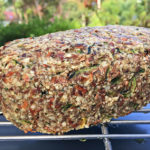



So much great info Jon, well done! You’ve definitely inspired me to start a new garden. I love that cinder block idea so clever and affordable!
Excellent Catherine! So glad to hear, let me know how it turns out for you
Great post. I’m excited for the rest of them [especially part 3!]. I love your blog and your instagram. Thank you for what you do.
Cheers and thank you for the kind words Jenn, I appreciate it
This post is loaded thank you. I have that Rodale book it’s a great one. I’ve actually been looking into an herb garden that goes on my kitchen wall. Do you recommend any specific ones? It would take up currently unused space so I figured why not lol
Hey Sal, not really by brand, no. The best place I have found ideas for different styles, sizes, etc is on Pinterest. I would search “herb garden” “kitchen garden”.. search terms like that.. you can even include “DIY” for Do It Yourself. So my recommendation would be to search and find a size that works great for your living space in particular. Love the enthusiasm though, using up that space is a great idea (and huge savings in money!)
Love it!! So inspirational 🙂 🙂 🙂
Awesome Casey, cheers!
This was such an inspiring post, thank you. I think I might have to give my own garden a try!
Glad you found inspiration from it, Sharon! If you have any questions, don’t hesitate to ask! Cheers